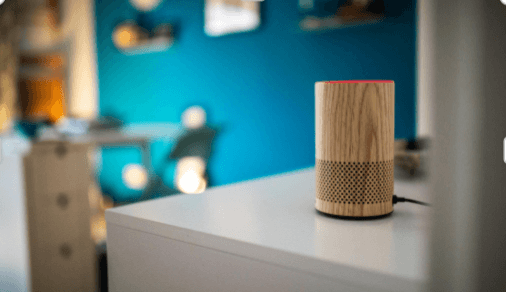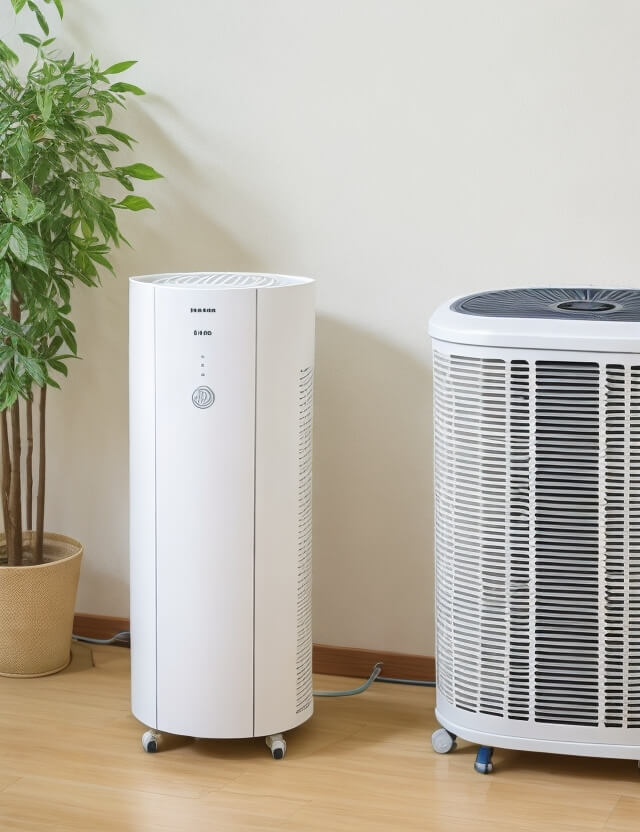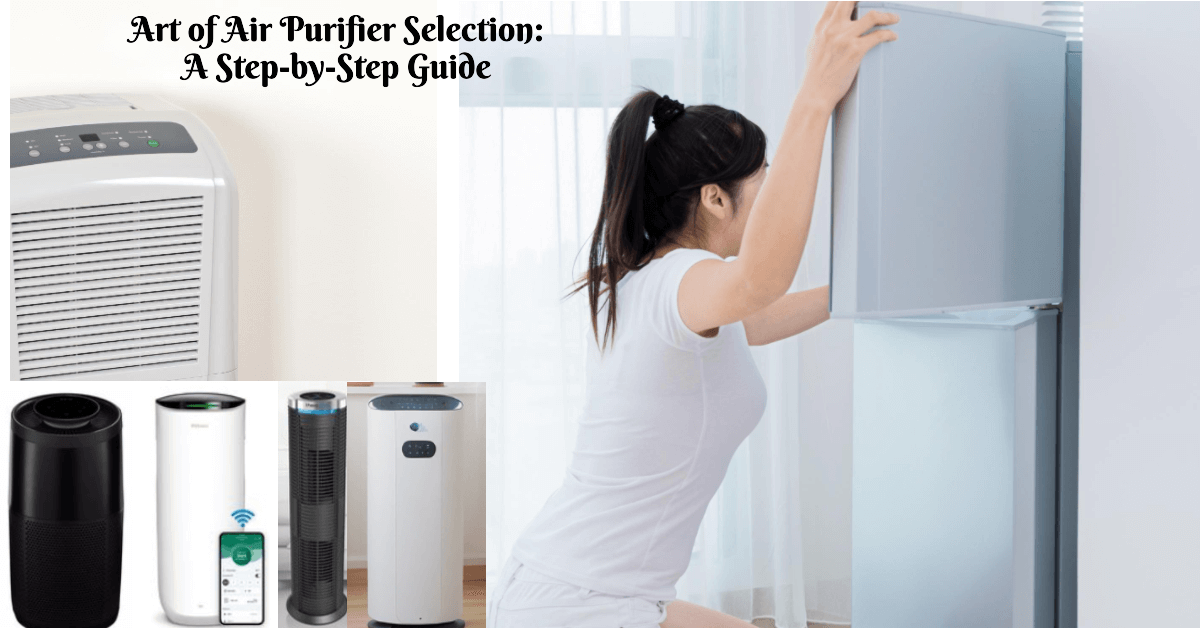We assure you Air purifier selection guide will help you to choose the right air purifier. Air we breathe indoors is getting worse and worse. This is why air purifiers have become so mmuch important. But picking the right one can be a bit difficult because there are so many choices.
When we get choices then we become little confused. Also as a common man we dont know about technicaities about Air purifiers so we dont know which type of air purifier we should go for. Thats why Air Purifier Master team has brought to you this helpful Air purifier selection guide, which will make it easy for you in Choosing the right air purifier. We’ll go through everything step by step so you can choose the one that’s just right for you.
Understanding Air Purifiers
What is an Air Purifier? Air purifier is a device designed to clean your indoor air. These devices typically consist of a fan that draws in air from the surrounding environment and passes it through one or more filters or purification mechanisms. The filters can capture particles such as by removing pollutants such as dust, smoke, pollen, mold, bacteria, viruses, and chemicals like VOC’s. Its purpose is to enhance air quality and safeguard our health from the harmful effects of air pollution.
Importance of Clean Air Clean air is what our heath need, providing essential oxygen for our cells and organs to function properly. It helps prevent various diseases and disorders, including asthma, lung cancer, and stroke.
How Do Air Purifiers Work? Air purifiers function by pulling air through filters via a fan, effectively trapping and neutralizing pollutants and particles. The purification rate, measured in cubic feet per minute (CFM), determines how quickly air is cleaned, with higher CFM values indicating faster purification. Different types of filters, such as HEPA, activated carbon, ionizers, and UV light filters, target specific pollutants.
Understanding Air Purification Technologies
Before we directly go into choosing air purifier, let’s first understand the various air purification technologies available in market. These technologies determine how effectively an air purifier can remove pollutants from the air. Some common technologies include:
- High-Efficiency Particulate Air (HEPA) Filters: These are Known for their ability to capture particles as small as 0.3 microns, HEPA filters are effective against dust, pollen, pet dander and mold spores.
- Activated Carbon Filters: These filters are good at removing odors, gases and volatile organic compounds (VOCs) by absorbing them onto the carbon surface.
- Ultraviolet (UV) Germicidal Irradiation: UV-C light is used to eliminate airborne viruses, bacteria and mold spores by disrupting their DNA.
- Ionic and Electrostatic Filters: These filters use charged particles to attract and trap pollutants, but they may produce ozone as a byproduct.

Assessing Your Indoor Air Quality Needs
The air quality in your home can vary based on factors like area location, lifestyle and sources of pollution. You can consider the following for “Air purifier selection”:
- Identify Allergens and Pollutants: Determine which specific pollutants you need to target, such as pollen, pet allergens, dust mites, smoke or VOCs.
- Health Considerations: If you or your family members have allergies, asthma or any other respiratory conditions, prioritize air purifiers designed specifically to address those issues.
- Noise Levels: Consider where the air purifier will be placed and whether noise is a concern, especially if you plan to use it in a bedroom or office.
- Filter Replacement Frequency: Some air purifiers require frequent filter replacements, which can impact longterm costs and maintenance.
Calculating the Appropriate Room Size
Air purifier effectiveness depends on its coverage area. A purifier too small for the room will not adequately clean the air, while also one too large might be unnecessarily expensive. So to figure out the right room size for your air purifier selection consider:
- Measure the Room: Determine the length and width of the room in square feet.
- Calculate Air Changes per Hour (ACH): For optimal purification, aim for 4 to 6 ACH. Multiply the room volume by the desired ACH to find the necessary Clean Air Delivery Rate (CADR).
- Refer to Manufacturer Recommendations: Check the air purifier’s specifications to find its CADR rating. Select a purifier with a CADR that matches or exceeds your calculated value.
Considering Additional Features
Air purifiers come with a wide range of additional features. These features can enhance their functionality and convenience. Some notable features we need to consider before Air purifier selection:
- Smart Controls: Wi-Fi connectivity and smartphone apps allow you to monitor and control your purifier remotely.
- Filter Replacement Indicators: These indicators alert you when it’s time to replace the filters, ensuring consistent performance.
- Timer and Scheduler: Set the purifier to operate at specific times, such as during sleep hours or when you’re not at home.
- Air Quality Sensors: Purifiers with sensors can detect pollutants and adjust fan speed accordingly, optimizing energy usage.
- Multiple Fan Speeds: Different speed settings offer flexibility to adjust the purification level based on changing air quality.
Comparing Maintenance and Filter Costs
The initial cost of an air purifier is just one aspect to consider for Air purifier selection. Maintenance and filter replacement costs can significantly impact the long-term value of your purchase. Keep the following things in mind while choosing the right air purifier:
- Filter Lifespan: Different air purifiers have fifferent filter lifespans. Some filters may need replacement every 3 to 6 months, while others can be replaced after a year.
- Filter Availability: Ensure that replacement filters are readily available for the model you choose. Waiting for longer periods for replacement filters to become available can leave you frustrated and purifier ineffective and compromise your indoor air quality.
- Cost of Replacement Filters: Replacement filter costs can vary widely based on the brand and model. Factor in the long-term expenses of replacement filters when evaluating the overall cost of the air purifier.
- Pre-Filter Maintenance: Some air purifiers come with washable pre-filters that capture larger particles and extend the lifespan of the main filters. Regularly cleaning pre-filters can help maintain the efficiency of the entire system.

Reading Reviews and Seeking Recommendations
To make sure you’re making a smart choice, read reviews from reliable sources, forums and ask for advice from friends, family or online communities. Check for customer reviews about products on amazon or other sellers. Keep these factors in mind when looking at reviews for air purifier selection:
- Performance: Look for consistent feedback on how effectively the air purifier removes pollutants.
- Durability: Assess the build quality and reliability of the purifier over time.
- Noise Level: Check if users find the noise level acceptable, especially in quiet spaces.
- Customer Support: Research the manufacturer’s customer service reputation and warranty terms.
Making the Informed Choice for Air purifier selection
In the final part of our comprehensive Air purifier selection guide, let’s bring it all together to help you confidently choose the perfect air purifier for you.
Prioritize Your Needs for Air purifier selection
Remember to stay focused on what you truly need. Think back to your first evaluation of your indoor air quality needs and health concerns. If allergies or breathing problems are your main worry, go for air purifiers with HEPA filters. They’re known to trap allergens well. And if smells or chemicals are bothering you, prioritize models with activated carbon filters. When you match your decision with your top concerns, you’ll pick an air purifier that tackles the things that matter most to you.
Consider Long-Term Costs
While the initial price of an air purifier matters, remember to think about the ongoing costs like filter changes and maintenance. Look for a model with replacement filters that don’t break the bank and are easy to find. If you can, go for a purifier with washable pre-filters. They will help you save money down the road. Consider all the costs throughout the air purifier’s life to see if it fits your budget in the long run.
Review Technical Specifications
Take a detailed look at the technical specifications of the air purifiers you’re considering. Look closely at the technical stuff. See if the purifiers match the size of your room based on their CADR ratings. Check the noise levels, especially if you want to put the purifier in a bedroom or workspace. Make sure it’s not too loud for you. Understanding the specific technical details will help you trim down your choices and pick the right one with confidence.
Explore Warranty and Customer Support
Don’t forget to look into the warranty and support from the manufacturer. If needed take the extended warranty. Take your time to read the warranty terms and see what it actually covers and for how many years. Also, check out how people feel about the manufacturer’s customer support. If you ever have a problem with your air purifier, having supportive and responsive customer service can really make a positive impact on your overall experience.
Trust Your Instincts
After thorough research, analysis and consideration, trust your instincts when making the final decision. After all the research, comparing, and reading reviews, your intuition plays a role too. Trust your gut feeling about a certain air purifier. It usually matches how well it fits your needs and likes. Keep in mind that you’re investing in your health and comfort, so choose the one that feels like the best fit for you.
Conclusion
With this simple Air purifier selection guide, you’re ready to choose right air purifier. By learning about different purification technologies, figuring out your room size, checking for extra features, comparing prices and reading reviews, you’ll make a decision that’s perfect for your air quality needs. With leading brands offering innovative solutions and reliable performance, achieving cleaner air at home has never been more attainable.

Frequently Asked Questions (FAQ) for Air Purifier Selection
Can air purifiers remove odors and chemicals from the air?
Yes, many air purifiers are equipped with activated carbon filters, which are effective at adsorbing odors, gases, and volatile organic compounds (VOCs). The activated carbon has a porous structure that attracts and traps these substances, leaving the air fresher and free from unwanted smells.
How often should I replace the filters in my air purifier?
Filter replacement frequency depends on factors such as the specific air purifier model, the type of filters used, and the air quality in your environment. As a general guideline, HEPA filters may need replacement every 6 to 12 months, while carbon filters might need replacement every 3 to 6 months. Refer to the manufacturer’s recommendations for your specific purifier.
Are ozone-generating air purifiers safe to use?
Ozone-generating air purifiers should be used with caution. While they can help neutralize odors and some pollutants, they also emit ozone. This ozone can be harmful to health, especially for individuals with respiratory conditions. It’s generally recommended to choose air purifiers that do not produce ozone to ensure a safer indoor environment.
Can air purifiers help with allergies and asthma?
Yes, air purifiers equipped with HEPA filters can be beneficial for individuals with allergies and asthma. HEPA filters effectively capture allergens like pollen, dust mites, pet dander and mold spores. They reduce the presence of these triggers in the air and provide relief for allergy and asthma symptoms.
How can I maintain my air purifier for optimal performance?
To maintain your air purifier’s performance, follow these tips:
Regularly replace filters as recommended by the manufacturer.
Clean pre-filters if your model has them.
Keep the surrounding area clean to prevent dust buildup.
Wipe down the exterior of the purifier to remove dust and dirt.
Store your air purifier in a cool, dry place when not in use.
Can I use an air purifier in multiple rooms?
Some air purifiers are designed to be portable and can be moved between rooms. However, keep in mind that an air purifier’s effectiveness is influenced by the size of the room and the unit’s CADR rating. If you plan to use an air purifier in multiple rooms, choose one that is appropriately sized for the largest room you intend to purify.
What is the CADR rating and why is it important?
CADR stands for Clean Air Delivery Rate, and it measures the volume of clean air that an air purifier can deliver per minute. The CADR rating is an indicator of the purifier’s effectiveness in removing specific pollutants, such as smoke, dust, and pollen. A higher CADR indicates a faster and more efficient air purification process.
Can air purifiers help with cooking odors and pet smells?
Yes, air purifiers with activated carbon filters can effectively reduce cooking odors and pet smells by adsorbing the odor-causing molecules from the air. However, it’s important to choose a purifier with sufficient activated carbon filter capacity to handle the volume of air and intensity of odors in your space.
Are air purifiers energy-efficient?
Air purifiers vary in their energy consumption based on factors like fan speed and coverage area. Some models are designed with energy-efficient features, such as sensor-based operation that adjusts fan speed according to air quality. Before purchasing, check the product specifications for information on energy consumption and efficiency.
What is a HEPA filter and how does it work?
A HEPA (High-Efficiency Particulate Air) filter is a type of filter designed to capture particles as small as 0.3 microns in size. These filters use a dense mat of fibers to trap particles like dust, pollen, pet dander and even some bacteria. The captured particles remain trapped within the fibers, allowing only clean air to pass through.
How to get right size air purifier?
Measure Room: Length x Width x Height.
Check CADR: Find Clean Air Delivery Rate for recommended room size.
Match CADR: Purifier’s CADR matches or exceeds room size.
Choosing the right size ensures efficient air cleaning in your space.
How do I choose an air purifier for my room size?
Use these steps:
Measure Room: Length x Width x Height.
Check CADR: Find Clean Air Delivery Rate (CADR) on purifier or manual.
Match CADR: Choose a purifier with CADR suitable for your room’s size.
By matching CADR to your room size, you ensure the air purifier can effectively clean the air in your space.
DheerajSonwane is a dedicated writer with expertise in air purification technologies. He focuses on providing well-researched content to help readers improve indoor air quality in homes and businesses. As the lead writer at AirPurifierMaster.com, Dheeraj offers practical advice his insightful reviews guide individuals in choosing the best air purifiers for their needs.


16 thoughts on “Air Purifier Selection: A go for Step by Step Guide”